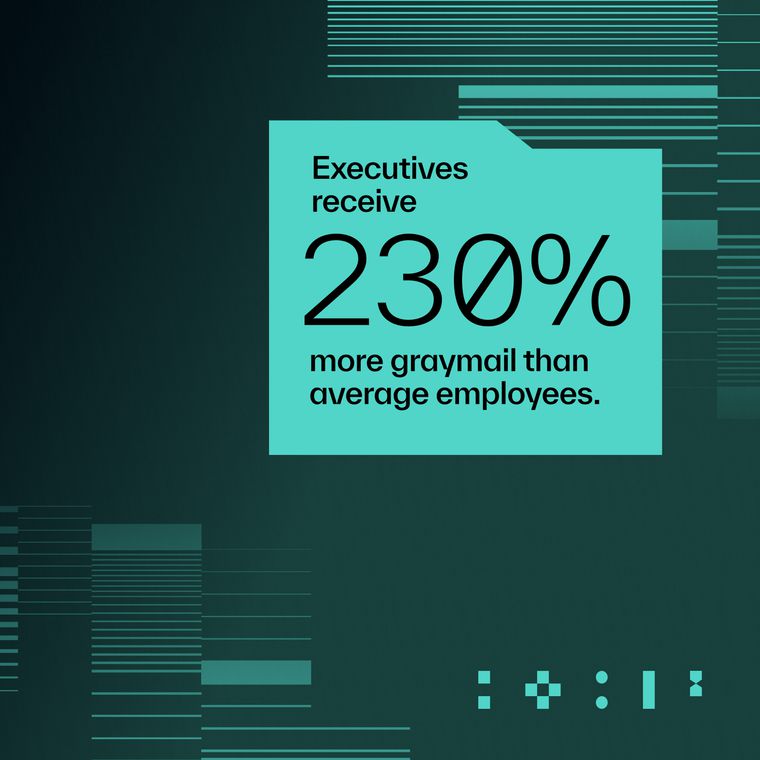How Advanced Threat Detection Safeguards Modern Email Systems
Explore modern solutions for advanced threat detection that safeguard email communications against sophisticated cyber threats.
June 18, 2025
Basic email security filters catch the obvious stuff like bulk spam, malformed messages, and known malware signatures. But today’s attackers are sending more than just obvious threats that rule-based detection can catch. They’re sending clean, text-based emails that impersonate vendors, exploit trusted domains, and target specific individuals with high-impact outcomes. These threats slip past legacy tools because of a lack of attachments and clear signals of malicious intent.
That’s where advanced threat detection comes in. Instead of scanning for known bad indicators, it analyzes behavior to understand what’s normal for your environment and flags what isn’t. Advanced threat detection powered by modern technologies like behavioral AI correlates identity, context, and intent across every message to catch the attacks that traditional filters miss.
This article explores how advanced threat detection works, why it’s essential for modern cloud email environments, and how security teams can use it to stay ahead of evolving threats like business email compromise, insider risk, and vendor fraud.
What Is Advanced Threat Detection?
Advanced threat detection is the process of identifying malicious activity by analyzing behavioral, contextual, and environmental signals, especially within communication channels like email. It focuses on intent rather than just indicators, using machine learning and behavioral baselines to detect threats that evade traditional security tools.
These threats often appear benign on the surface. Business email compromise (BEC), vendor fraud, and zero-day exploits don’t rely on malware or suspicious links that rule-based security measures can easily detect. Instead, they exploit trust by using familiar names, known infrastructure, and legitimate-looking content.
To detect these evasive threats, advanced systems look for subtle anomalies like:
Unusual Communication Patterns: For example, a finance executive emailing a vendor they’ve never interacted with before.
Behavioral Deviations: For example, a supplier requesting a payment outside normal billing cycles or in a different currency.
Contextual Inconsistencies: For example, an email claiming urgency that’s out of character for the sender’s role or tone.
Relationship Graph Gaps: For example, messages from contacts that technically exist but have no previous communication history with the recipient.
These signals are nearly impossible to catch with static rules or traditional threat intel feeds alone.
Abnormal uses this behavioral approach to detect and stop advanced email threats in real time. By analyzing thousands of signals per message, including identity, content, tone, and prior interactions, Abnormal uncovers anomalies that others miss. It’s a dynamic defense built to efficiently and effectively defend against today’s attackers.
The Evolution of Cyber Threats
Cyber threats have evolved from basic hacking to highly organized attacks by criminal groups and nation-states. Techniques like fileless malware that runs in memory and supply chain attacks, such as the 2023 SolarWinds breach, challenge traditional defenses.
Attackers use legitimate system tools to evade detection, requiring threat detection systems based on behavioral patterns instead of known signatures.
Key Capabilities of Advanced Threat Detection
Advanced threat detection combines artificial intelligence (AI) and machine learning (ML) to analyze large data sets and detect anomalies invisible to humans. That way, it can provide proactive security measures rather than reactive ones.
For example, advanced threat detection systems use behavioral analytics to define a baseline for user, device usage, and network activity, so it can flag deviations to catch zero-day threats. They actively hunt for suspicious behavior using multiple detection methods layered together. This multi-layered approach increases detection accuracy and reduces false alarms.
These systems also provide continuous, real-time monitoring across all attack surfaces to minimize hidden attack time.
Here are some technologies that advanced threat detection systems employ to ensure enterprise-level security.
Sandboxing
Sandboxing runs suspicious code in isolated environments to safely analyze unknown threats. Next-generation sandboxes use nested virtualization to trap complex malware that tries to evade detection.
However, some threats still bypass sandbox-based tools, highlighting the need for advanced detection techniques beyond traditional methods. For more details, see anomalies evading secure email gateways.
Behavioral Analysis and Machine Learning
Behavioral analysis establishes baseline activity and detects suspicious deviations, catching insider threats and novel attacks missed by signature-based systems.
Machine learning enhances detection by combining supervised learning on known threats with unsupervised learning to spot anomalies.
Real-Time Monitoring and Network Traffic Analysis
Continuous monitoring of network traffic and email best practices enables detection of advanced threats like lateral movement and command-and-control communications. Automation allows millions of events to be processed per second, correlating data to reduce false positives.
Benefits of Implementing Advanced Threat Detection
Advanced threat detection improves security posture, reduces financial and reputational risks, and supports regulatory compliance.
Enhanced Security Posture
Advanced threat protection stops sophisticated threats such as zero-day attacks and fileless malware that evade traditional defenses. With the rise in business email compromise (BEC) attacks, advanced detection is crucial.
Integrating threat intelligence helps organizations understand attack patterns and reduce breach costs. Detecting anomalies identifies insider threats and account takeovers, reducing dwell time and associated damages.
Mitigated Financial and Reputational Risks
Organizations using AI-driven advanced threat detection technologies reduce breach costs. Security teams spend less time on false alarms and more on real threats. Business continuity is maintained during attacks, preventing revenue loss.
Effective prevention also safeguards organizational reputation by minimizing both direct and indirect breach costs.
Better Compliance and Reporting
Advanced threat detection systems simplify meeting regulatory requirements like GDPR, HIPAA, and PCI DSS. Automated audit support streamlines documentation, while detailed forensics facilitates breach notifications.
Adaptive compliance features help maintain alignment as regulations evolve, resulting in significant savings on compliance activities.
How to Select the Right Advanced Threat Detection Solution
Choosing an advanced threat detection solution depends on organizational needs, industry, existing infrastructure, and security team capabilities.
Assess Your Organizational Needs
Evaluate cybersecurity requirements based on organization size and industry-specific threats. Identify security gaps to prioritize detection focus areas. Consider the total cost of ownership, emphasizing solutions that reduce incident response time and breach likelihood.
Explore Vendor Offerings
Prioritize solutions with multiple, accurate detection methods and low false positives. Check for integration with existing platforms, like the Microsoft Intelligent Security Association. Usability and reporting features should support both analysts and leadership. Seek vendors with strong customer support and request demos to test solutions in your environment.
Consider Tools and Technologies
Effective solutions include automated response, customizable dashboards, and integrated threat intelligence. Compatibility with existing security tools is critical. Combining signature-based, behavioral, and machine learning detection maximizes coverage while reducing false alerts. For email-specific threats, leverage tools for enhancing email security and address cloud email threats through solutions that adapt to modern work environments.
Strengthen Threat Detection with Modern Intelligence
Organizations that invest in collaborative threat intelligence identify threats faster, reduce breach risk, and respond with greater precision. As cyberattacks become more advanced, traditional defenses fall short, making advanced threat detection a necessity rather than a luxury.
To explore how Abnormal’s AI-driven platform can enhance your organization’s advanced threat detection, book a demo or visit our resources page to learn more.
Related Posts
Get the Latest Email Security Insights
Subscribe to our newsletter to receive updates on the latest attacks and new trends in the email threat landscape.


